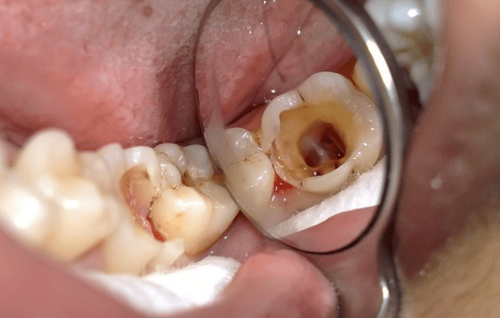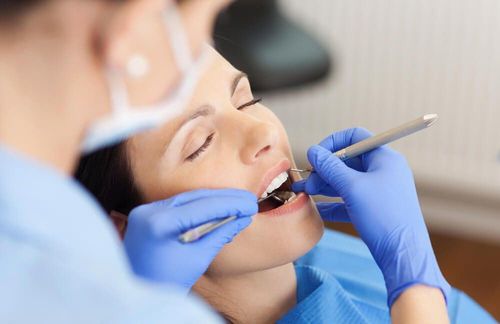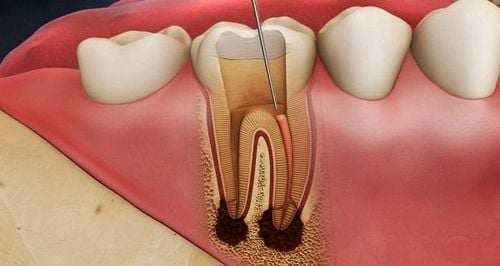This is an automatically translated article.
Root cysts are an epithelial cyst of the jaw associated with root infection. This is a disease that is difficult to detect because it develops silently and often has no symptoms. Accordingly, the risk of complications that can seriously affect oral health.
1. What is a root cyst?
Root cysts are a type of jaw epithelial cyst associated with root infection. Root cysts are developed from a carious tooth, the pulp is necrotic, releasing toxins at the apex, causing inflammation around the apex. The inflammatory process stimulates necrosis, destroying the remaining Malassez epithelial cells in the periodontal ligament, leading to the formation of cysts, which may or may not be inflamed. These cysts can press on the bone, toxins are released from the granular tissues causing bone resorption.
Root cysts are the most common cysts in the jawbone, the upper jaw is more common than the lower jaw, the most common are cysts in the upper incisor area. As the tooth follicle grows larger, there is more bone destruction, forming a large cavity inside the jawbone, mainly containing water but no bone. Since then, the bones have become thinner and easier to break.
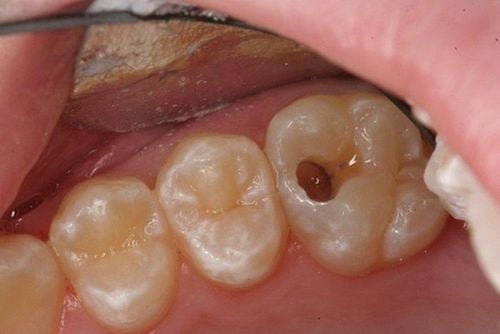
Nang chân răng phát triển từ sâu răng
2. Are dental cysts easy to detect?
Root cyst disease is often difficult to detect due to poor clinical symptoms. At first, the patient does not feel pain or discomfort, the only early sign is discoloration of the teeth, but often little attention is paid. The disease develops silently until the cyst enlarges, causing swelling or infection, causing symptoms such as pain in the tumor area, pus discharge, facial swelling in the jawbone, loose teeth,...
When taking x-rays of the teeth , the typical image of a root cyst on film is a bright circular area (luminescent area) or oval attached to a dead root, often adjacent to the hard leaf of the periodontal fissure. The tooth corresponding to the cyst has a deep hole image, the root apex is in the radiolucent area, and the periodontal ligament is enlarged. Adjacent teeth are often tilted or displaced. Very large cysts in the maxillary bone can expand in many directions and become atypical. In infected cysts, the cyst boundary becomes unclear because of inflammatory vasodilatation and surrounding bone resorption.
Dental cysts progress for a long time, causing destruction of tissue around the apex, bone loss, if not treated in time, it can cause loss of the root cause and adjacent teeth. Even in severe cases, it can lead to loss of molars, deformed jawbone causing flattened face, hindering functions of chewing, speaking, swallowing,...
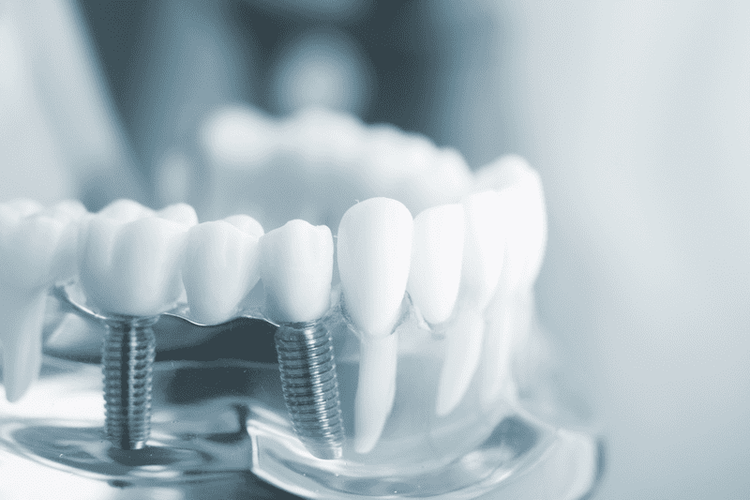
Nang răng có thể gây tiêu răng nếu không được điều trị sớm
3. Treatment of root cysts
The method of treating root cysts is surgery. After dental examination, dental x-ray, the doctor will evaluate the condition of the root cause and affected teeth, the size of the cyst, the degree of defect of the jaw bone to find the right treatment plan:
If the teeth have loosened a lot and the bone loss is more than 1/3 of the roots, the teeth will be extracted in combination with removing the capsule shell. If the alveolar bone is still sufficient and the expected root part is not more than 1/3 of the tooth root, the tooth can be kept. The doctor will treat the tooth pulp, thoroughly seal the canals, remove the tooth root, remove all the capsule shell. Maxillary cyst: if the large cyst destroys the maxillary sinus, the doctor will remove the cyst and the lining of the sinus, and open the drainage into the bottom nasal cavity on the same side. Enlarged mandibular cyst: determine the degree of firmness of the jaw bone margin based on dental x-ray images and observation at the time of surgery, the doctor will decide to remove the cyst alone or use a strengthening brace to Prevention of jaw fractures. Treatment of bone defects after removal of the cyst: if the defect is small, no intervention is required, the defect will be compensated by the body by fibrous tissue or epithelialization. If the gap is large, the doctor can fill it with self-adhesive materials such as muscle flaps, bone, .. or artificial materials such as carbon, cement,... Thus, if the root cyst is discovered. Early treatment will be much simpler and will not cause complications, does not affect aesthetics. On the contrary, if detected late, when the tooth cyst is already at a severe stage, the patient is at risk of very serious complications, seriously affecting health, and the treatment is also difficult and expensive. However, early detection of root cysts is not simple, because the disease often has no symptoms in the early stages. The method of detecting the disease in this period is a dental examination and a panoramic dental x-ray. Dental x-ray images will help detect root cyst diseases, jaw bone tumors,...
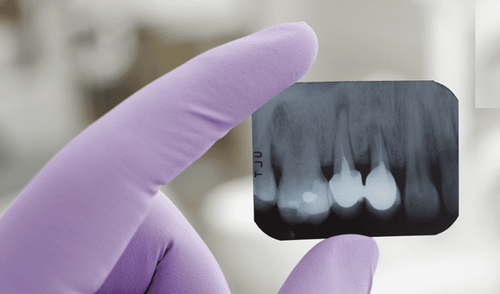
Chụp X-quang răng giúp chẩn đoán bệnh về răng miệng
To register for examination and treatment at Vinmec International General Hospital, you can contact the nationwide Vinmec Health System Hotline, or register online HERE.





